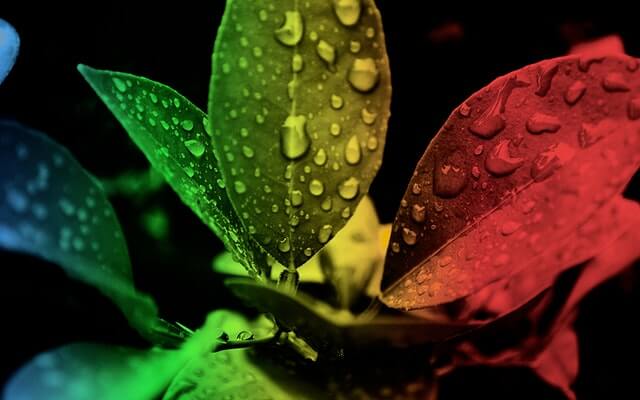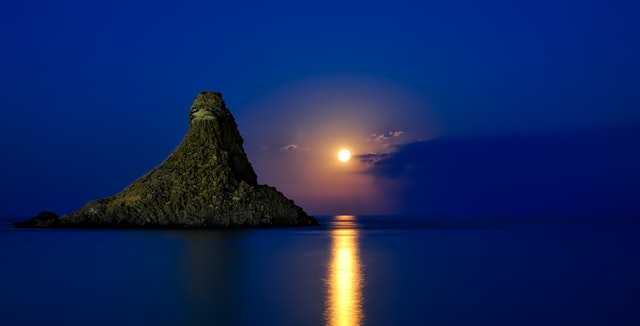When you are planning to buy a new camera or looking at using a different camera body, an important decision to take is to decide whether you need a full-frame camera or a crop sensor.
The term “full frame” refers to a sensor size that has the same dimensions as the 35mm film format, and on the other hand, a crop sensor is smaller.
There are many involving factors in taking the right division such as your budget, the genre of photography you are interested in, and weight/size of the camera you feel comfortable with, and many more.
I hope this article will help you decide which one suits your needs as a photographer. I will explain what full-frame and crop sensors are and what each does best, and what are their advantages and disadvantages. In addition, you’ll learn how you can take advantage of each option to take better pictures.
Let us start from the basics!

What is a camera sensor?
A camera sensor is a piece of hardware inside the camera that captures light and converts it into signals, which result in an image. Sensors consist of millions of photosites or light-sensitive spots that record what is being seen through the lens. The camera transforms these photosites into pixels that make up your image. The size of the camera’s sensor determines how much of this light is used to create the image.
A large camera sensor size can capture more information, producing better quality images than smaller sensors. The size determines what you see through your camera’s viewfinder. Smaller sensors apply a crop to lenses while larger sensors can capture much more of the scene.
The Sensor size and Megapixel
A pixel is the smallest unit of a digital image that can be represented in a display device. A million pixels is the equivalent to one megapixel. Therefore, your megapixel count refers to how many of these photosensitive sites your sensor contains. If you have a 24-megapixel camera, it means you have 24 million photosites on your sensor. It seems that a higher megapixel means better image quality. Unfortunately, this is not absolutely true!
Here comes the effect of the sensor size, if you have a high megapixel count, on a small sensor, it means that the photosites are now smaller and It results in smaller pixel sizes (which is measured in Microns with the symbol μm)
Large pixels are better at gathering light; they have a better dynamic range and produce less digital noise compared to small pixels. As an example, a smartphone camera that has 12 megapixels may have pixels measuring a tiny 1.1 microns, whereas a 12-megapixel Sony A7Siii has pixels measuring 8.4 microns. They have the same pixel count but the pixel size is dramatically different.
In good light, a smaller pixel sensor can work just fine. However, if there is low light, the tiny photosites on a smaller sensor don’t work as well.
The Sensor size and Focal length
Focal lengths of lenses are based on the full-frame (35mm standard). This means that a 200mm lens on a full-frame camera will produce a 200mm image. However, crop sensors have what is called a “crop factor” that helps determine the effective focal length of a lens.
An APS-C with a crop factor of 1.5x will result in that same 200mm lens producing 300mm equivalent images.
Alternatively, a Micro Four Thirds camera with a crop factor of 2x will produce 400mm equivalent images when using the 200mm lens. This may sound confusing, but once you know the crop factor of a camera it is quite simple to calculate.
Just remember that a full-frame sensor produces images that match the lens focal length, crop sensors produce longer focal lengths. Every camera manufacturer publishes the crop factors, so the information is readily available.

What are the standard camera sensor sizes?
-
Full frame
A full-frame sensor is based on the size of 35mm film, measuring around 36 by 24mm. Full frame sensors are found in professional level DSLRs and mirrorless cameras. Some very high-end compact cameras also have it.
-
Crop sensor sizes
- APS-C: An APS-C sensor crops the full frame image by about 1.5x, measuring around 22 by 15mm. This is the size sensor found in most entry-level to mid-level DSLRs. Some mirrorless cameras such as Fujifilm’s, and sometimes a high-end compact cameras also have it.
- Micro Four Thirds: The Micro Four Thirds sensor camera launched with the start of the mirrorless camera. It was to find a happy medium between camera size and image quality. The Micro Four Thirds sensor has a 2x crop compared to a full-frame sensor, measuring 17.3 by 13mm. Olympus mirrorless cameras use a Micro Four Thirds sensor. So do most Panasonic mirrorless cameras.
- One inch: Designed for compact cameras, the one-inch camera sensor measures about 13.2 by 8.8 mm, with a 2.7x crop from the full frame. A one-inch sensor is found in a high-end compact camera. It packs more quality than a compact camera, but not as much as a DSLR or mirrorless camera.
- Compact camera and smartphone sensor sizes: The sensors in typical compact cameras and smartphones have more variation. All of them are small considering the size of a full-frame sensor. A 1/2.3-inch sensor is one of the most popular sizes, along with sizes like a 1/1.7-inch.
Difference between a Full Frame and a Crop Sensor
To know the differences between the full frame and crop sensor, I will discuss the advantages and disadvantages of each type.
The advantages of the full-frame sensor
-
Better Image Quality

In general, a full-frame sensor will produce higher-resolution images than crop sensors, because they let in more light and detail. A camera isn’t the sole factor in determining image quality, but a full-frame sensor will get you a solid start. If you are a commercial photographer or need to print photos at large sizes, a full-frame sensor will help you meet the highest standards for resolution and detail. More megapixels also means you can significantly crop an image and still come away with a usable frame.
-
Broader Dynamic Range
Dynamic range refers to the range of light exposure your camera captures. The dynamic range of a full-frame sensor is much broader. This means you can take better high-contrast images and more easily recover details both in dark shadows and bright highlights (if you’re shooting in RAW) than you would with a crop sensor.
-
Better Low-light performance

It is very difficult to achieve the same low-light performance with a crop sensor that you can with a full frame; The full frame is much sharper, and clearer, and gives you less noise and more detail.
night photography and astrophotography are low-light scenarios where the larger sensor really shines. High ISO performance goes hand in hand with low-light capabilities. Because more light hits the bigger sensor, you don’t have to crank up your ISO as much to compensate for the lack of light and thereby degrade your shot with the grainy noise associated with high ISOs.
-
Shallower Depth of Field

Although the depth of field of a photo depends mainly on the lens and aperture, a full-frame sensor can help provide a shallower depth of field.
You will get more Bokeh with a full-frame sensor compared to a crop sensor if you’re using an equivalent lens with the same aperture. This is helpful for portraits, food photography, and any other situations where you want blurred backgrounds.


-
Wider field of view

Because there’s no crop factor on full-frame sensors, you can get a wider field of view with your lens. If you shoot landscape photography or anything that needs a wide frame, such as real estate photography or architecture, you’ll probably want a full frame.

Disadvantages of full frame
-
Expensive
Full-frame cameras require a greater investment than crop sensor cameras. In addition, their compatible lenses can often be even pricier so if you’re not making money from the art and investment is an issue, a crop sensor camera will serve you just as well. Always remember that Full-frame cameras are designed to meet the needs of professional photographers, and their higher price tags reflect these extra features.
-
Heavier and bulkier
When it comes to weight, there’s no getting around the fact that full-frame cameras are heavier and bulkier. Even as mirrorless cameras continue to make great steps toward slimmer full-frame bodies, there’s no getting around the added bulk of a full-frame camera. This is in part due to the size of the sensor. If you want to take your camera on the road for travel photography or street photography, carrying and handling a full-frame camera and lenses can be an issue.
-
It output a Larger file size
More pixels mean bigger files. This means you’ll have to invest in the appropriate storage to house these larger files, from faster memory cards to cloud storage or backup drives.
The advantages of the Crop sensor
-
Allow for Better Zooms
While the crop factor can be seen as a weakness of these cameras, you can also turn this magnification to your advantage in scenarios where you need to get as close as possible. The crop sensor gives your lenses extra reach. If you shoot wildlife photography or sports photography, you can do pretty well with a crop sensor camera

-
Smaller Camera sizes/ lighter
If you are not willing to spend much cash or you cannot afford to buy a full-frame camera, it’s better to start with a crop sensor, which is also smaller and lighter. In addition, mirrorless crop sensor cameras are so small that if you need something super portable, a crop sensor is great.
The following table compares the weight and the size of full frame vs crop sensor of the newest mirrorless Canon cameras:
Weight comparison
Full frame camera
Canon EOS R6 680 g
Canon EOS R5 738 g
Canon EOS R3 822 g
Crop sensor camera
Canon EOS R7 530 g
Canon EOS R10 382.2 g
Size comparison
Full frame camera
Canon EOS R6 138 x 97.5 x 88.4 mm
Canon EOS R5 138 x 97.5 x 88 mm
Canon EOS R3 150 x 142.6 x 87.2 mm
Crop sensor camera
Canon EOS R7 132 x 90.4 x 91.7 mm
Canon EOS R10 122.5 x 87.8 x 83.4 mm
Disadvantages of crop sensors
-
Lower image quality
A crop sensor can’t fit the same amount of information into a file as a full frame simply due to its smaller surface area. But in practice, this may only become noticeable in certain situations, such as low-light conditions. As camera technology advances, the quality gap between crop sensors and full frames will continue to close.
-
Tighter focal length
The crop factor can be a handy hack to amplify your telephoto reach, but the other side is that shooting wide-angle shots is difficult. “Because you’re zoomed in with a crop sensor, it’s really hard to back out,” says Silva. “You’d need a very wide angle lens to get everything around you in a crop sensor, but there’s a lot of distortion with lenses that wide.”
Conclusion
Now I hope you understand the pros and the cons of both full-frame and crop sensor cameras, the decision of choosing one of them is yours. It is clear that there are no one-size-fits-all needs. The factors that influence this decision are mostly your budget and your genre of photography.
Smaller sensors are generally less expensive than their larger counterparts. Full frame sensors is considered the industry standard for working professionals, they contain larger individual pixels than crop sensors, which results in better image quality. Nonetheless, you can produce incredible results from today’s crop sensor cameras. The best decision will fulfill your needs, budget, and output requirements.
A Useful Tip!
Can you tell me about used photography gear markets?
Buying and selling used cameras and lenses has almost become an industry by itself. There are many high-quality second-hand cameras and lenses out there, which means you can fulfill your needs and still save a good bit of money. For more information that is detailed check my posts:
What Is The Best Place To Buy Used Camera Lenses
How To Buy Used Camera Lenses? – KEH Is The Answer!
Although Amazon, B&H, and ADORAMA have their markets for used photography gear, my recommended place is KEH. It is a one-stop shop for camera and lens enthusiasts who love the process of buying and selling gear. They have one of the largest online lens collections around and they have streamlined the process of buying and selling in a way few others have.
Thanks for reading, I hope you enjoyed the article, in case you have any questions just drop them below & I will be happy to answer you.
All the photos in this post are credited to Ehab Amin
If you enjoy the site, don’t forget to subscribe, we will only inform you when a new article is posted.










This is a very helpful post on the difference between a full frame and a crop sensor. I have heard about the two types in photography, but have never understand the differences between them. So thank you for explaining it in such intricate detail.
I have a fairly old Pentax, so am wondering is a sensor only on a new model of camera? You mention several Canon models in the post, so is this sensor a feature that is only with a Canon camera? Thank you for clarifying.
Every camera has either a film or a digital sensor. It is where the photo is captured.
Thanks for the comment
Thank you very much for this valuable detailed post about Difference Between A Full Frame And A Crop Sensor. This is really a very interesting post. Because photography is the most popular thing in the world today. Also, I like to zoom and take photos. I think the crop senator is very good. Keep posting like this.
Thanks for your feedback